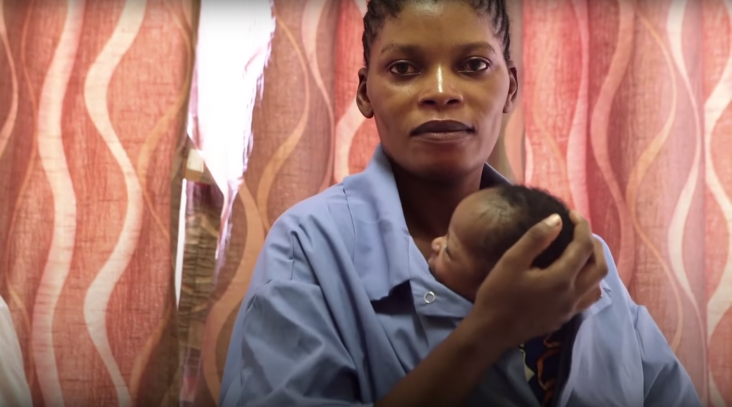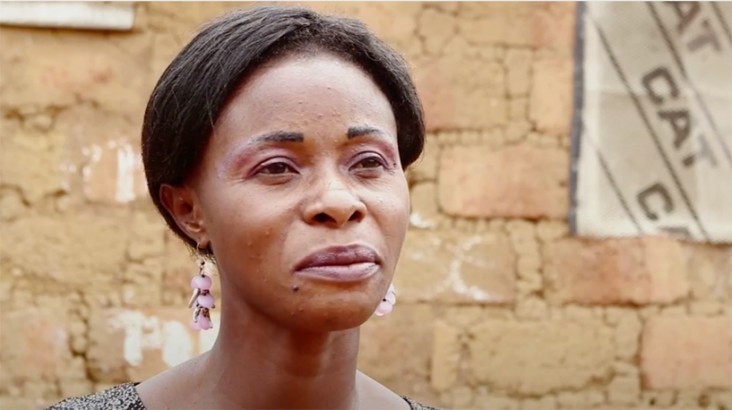
Maternal and Child Health Investments, FY16: $34,000,000
DRC Quick Facts: Newborn Health
30 newborn deaths per 1,000 live births1
31 percent of child deaths occur during the newborn period, or first 28 days of life2
123,400 newborns could be saved by 2020 through a scale-up of key interventions3
In the Democratic Republic of Congo (DRC), one of 25 priority countries for USAID’s work in maternal and child health, the under-5 child mortality rate has been cut in half since 1990.4 Infant and newborn mortality rates, however, have declined more slowly. USAID is working in the DRC to improve the quality and accessibility of health services for the Congolese people. Newborn health is a priority.
Seven months into her pregnancy with her son Mardochée, Mama Sophie of the DRC began to feel pain. She thought that the baby might be changing positions in the womb, but when she visited the hospital, she learned that her cervix had dilated to 8 centimeters: her body was preparing for labor.
“Before Mardochée, two of my children died,” she said. “When I heard I was at 8 centimeters and I had to deliver a premature baby, I was afraid.”
At the Dipeta Health Center where Mama Sophie checked in, however, the staff had been trained through USAID in proven practices to improve the health of premature babies. Dr. Auguy Okese, Medical Director at the Dipeta Health Center, explained that incubators, conventionally used to keep premature and low birthweight babies warm and stable, encounter the obstacle of unreliable electricity in many health centers across the DRC.
“To alleviate this issue linked to the usage of incubators,” he said, “we received several trainings in newborn health, including care for low birthweight infants.”
One such training, Kangaroo Mother Care (KMC), is just as effective as incubators at keeping babies safe and healthy – and ultimately saved Mardochée’s life.5 KMC incorporates continuous skin-to-skin contact to keep the baby warm and to stabilize his or her heart rate and breathing. KMC facilitates immediate and exclusive breastfeeding and recommends close follow-up after discharge from a health facility.

“The Kangaroo Care method is simple and easily adapted to our community,” said Dr. Okese.
“These are techniques that we know, that are simple, that are easy to scale and that don’t cost much, but that were not being applied to scale across the country,” explained Dr. Richard Matendo, the USAID supervisor for this program. “This project has trained many people, allowing these strategies to be used on a larger scale. The number of lives saved, it’s those results that show the impact of the project.”
And the results are encouraging: through the work of USAID, the deaths of more than 109,000 children have been averted -- a quarter of the DRC government's objective for the past three years, according to Diana Putman, the USAID/DRC Mission Director.
Today, as a healthy three-year-old boy, Mardochée is a testament to the importance and the impact of USAID’s maternal and child health efforts and the dedication of our partners across the globe.
“A baby like Mardochee, who we have cared for in this way, it gives us great joy and satisfaction,” Dr. Okese remarked. “We say to ourselves, today, if we can be proud of our results, it is because of our partners, who supported us and trained us.”
FROM INVESTMENT TO IMPACT
USAID’s efforts in the DRC have saved hundreds of thousands of lives already, but there is much progress yet to be made. In the 2014 Acting on the Call Report, USAID formulated a roadmap for making data-driven decisions and targeted investments to save the lives of 15 million children and 600,000 women by 2020.6 In the Democratic Republic of Congo, a scale-up of known and proven high-impact interventions could save the lives of more than 1.5 million children by 2020.7
By improving the health of women and children in countries like the DRC, USAID is helping to build resilient and self sustaining health systems. Our global health efforts contribute security and prosperity for the US and around the world.
Meet more of the women and children that benefit from USAID's efforts.
« Back to the Acting on the Call home page
1 Levels and Trends in Child Mortality: Report 2015. UNICEF, September 2015.
2 Ibid.
3 Acting on the Call: Ending Preventable Child and Maternal Deaths. USAID, June 2015.
4 Levels and Trends in Child Mortality: Report 2015. UNICEF, September 2015.
5 Kangaroo Mother Care: A Practical Guide. WHO, 2003.
6 Acting on the Call: Ending Preventable Child and Maternal Deaths. USAID, June 2014.
7 Acting on the Call: Ending Preventable Child and Maternal Deaths. USAID, June 2015.







Comment
Make a general inquiry or suggest an improvement.